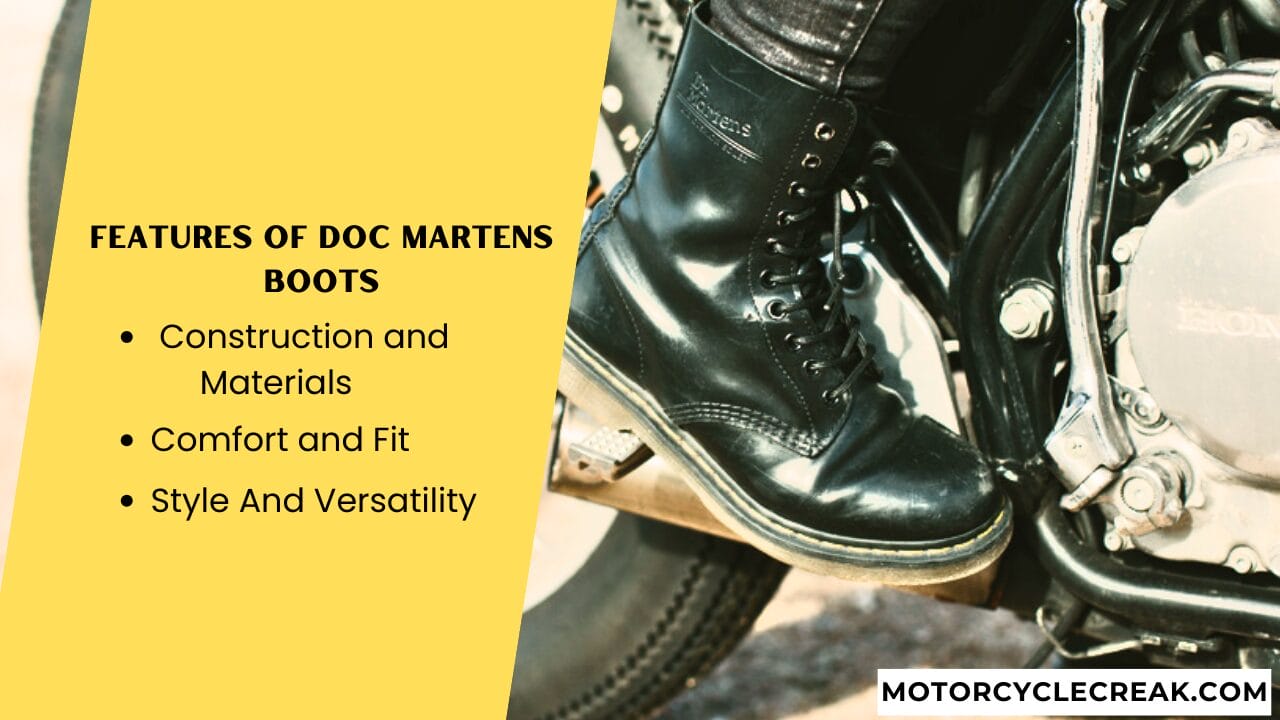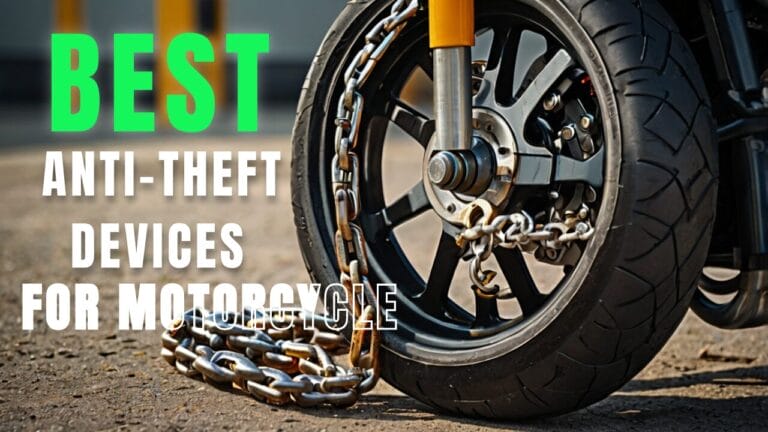Are Doc Martens Good for Motorcycle Riding
Ever wondered if your trusty Doc Martens can pull double duty as motorcycle boots? Many riders do. After all, Doc Martens are known for their durability and style. But when cruising down the highway, style isn’t the only thing that matters; safety is the utmost priority.
Choosing the right motorcycle gear is like picking the right tool for a job—get it wrong, and you could be in for a world of hurt. Proper motorcycle gear is your best friend, keeping you safe and comfortable on those long rides. So, let’s dig into whether those iconic boots are cut out for the ride of their lives.
Overview of Doc Martens Boots
Doc Martens boots have a rich history and a reputation for durability and style. Let’s dive into what makes these boots so iconic and whether they can handle the rigors of motorcycle riding.

A Brief History of Doc Martens
The story of Doc Martens begins in post-war Germany. In 1945, Dr. Klaus Märtens, a doctor in the German army, injured his foot while skiing in the Bavarian Alps. Finding standard-issue army boots too uncomfortable, he designed a unique air-cushioned sole to improve comfort. With the help of his friend, Dr. Herbert Funck, Märtens began producing these innovative boots using discarded rubber from Luftwaffe airfields.
Fast forward to 1960, when the British footwear company R. Griggs Group Ltd. acquired the patent. They anglicized the name to “Dr. Martens” and tweaked the design, adding the distinctive yellow stitching, grooved sole, and heel-loop. The first pair of Dr. Martens boots rolled off the production line on April 1, 1960, and the rest, as they say, is history.
Features of Doc Martens Boots

1. Construction and Materials:
- Leather Uppers: Doc Martens boots are primarily made from high-quality leather, including smooth, patent, and vegan options. The leather is known for being durable, though it often requires a break-in period.
- Air-Cushioned Soles: One of the standout features is the patented air-cushioned sole, also known as the “Bouncing Soles.” These provide excellent shock absorption and comfort, making them a favorite for all-day wear.
- Goodyear-Welted: This construction method involves stitching the upper and sole together and then heat-sealing them. This makes the boots more durable and easier to repair.
- Slip-Resistant Soles: The soles are designed to provide good traction on various surfaces, though their effectiveness on wet or oily surfaces can vary.
- Yellow Stitching: The iconic yellow stitching around the sole is a style statement and a symbol of the boot’s robust construction.
2. Comfort and Fit:
- Insoles: Doc Martens come with cushioned insoles that provide additional comfort. Some models also feature removable insoles for those who prefer custom orthotics.
- Padding: Many Doc Martens boots include padded collars and tongues, enhancing comfort around the ankles.
- Lacing: The traditional 8-eyelet lacing system allows for a secure and adjustable fit, crucial for comfort and support.
3. Style and Versatility:
- Variety: Doc Martens offers various styles, from the classic 1460 boot to various low-cut shoes, sandals, and even high-heeled boots.
- Colors and Finishes: Beyond the classic black and cherry red, Doc Martens comes in many colors and finishes, including smooth, matte, and shiny patent leather.
- Subculture Symbol: Over the decades, Doc Martens has been embraced by various subcultures, including punks, goths, and grunge enthusiasts, cementing their status as a cultural icon.
Doc Martens boots are celebrated for their style, durability, and comfort blend. While they excel as everyday footwear, the question remains: Are they up to the task of motorcycle riding? Let’s explore this further in the next sections.
Comparison Table
To determine if Doc Martens suits motorcycle riding, focus on its key features and compare them with those of specialized motorcycle boots.
| Feature | Doc Martens Boots | Specialized Motorcycle Boots |
| Protection | Minimal impact protection, no reinforced areas | Reinforced toes, ankles, and shins for high-impact protection |
| Abrasion Resistance | Standard leather, prone to wear and tear | High abrasion resistance with materials like Kevlar or reinforced leather |
| Sole Grip | Air-cushioned sole with moderate grip | Specialized soles with enhanced grip for foot pegs and road surfaces |
| Waterproofing | Limited waterproofing; some models offer water-resistant options | Advanced waterproofing with Gore-Tex or similar materials |
| Comfort | Air-cushioned soles provide good general comfort | Designed for long rides with additional padding and ergonomic support |
| Flexibility | Flexible, good for walking and general use | Stiffer construction for better protection and support during rides |
| Ankle Support | Moderate support | Enhanced ankle support with padded collars and rigid structures |
| Weather Resistance | Limited weather resistance | Designed to withstand various weather conditions, including rain and cold |
| Durability | Durable for everyday use, requires break-in period | Highly durable with reinforced stitching and materials designed for heavy use |
| Safety Standards | No specific motorcycle safety standards | Meets specific motorcycle safety standards (CE certification) |
| Weight | Generally lighter | Heavier due to added protection features |
| Price Range | $$ – $$$ (Moderate to High) | $$$ – $$$$ (High to Very High, but justified by protection and features) |
Situational Suitability of Doc Martens for Motorcycle Riding
When Doc Martens Are Good to Use
Short, Casual Rides: Doc Martens can be a stylish and comfortable choice if you’re just popping around town or taking a short, leisurely ride. They offer decent grip and are comfortable for short distances.
Urban Commuting: Doc Martens can work well for city commuting, where speeds are lower, and the risk of high-impact incidents is reduced. Their flexibility and comfort make them suitable for walking around once you’ve parked your bike.
Mild Weather Conditions: Doc Martens can handle the ride on dry, mild days. They’ll keep your feet comfortable and are breathable enough to prevent overheating.
When Doc Martens Are Not Suitable
Long Rides: For long rides, Doc Martens lack the necessary ergonomic support and padding. The discomfort can build up over time, making them less ideal for extended journeys.
High-Speed Riding: At higher speeds, the risk of accidents increases, and Doc Martens’ minimal impact protection becomes a significant drawback. Specialized motorcycle boots are designed to handle these risks with reinforced areas for maximum protection.
Wet or Extreme Weather: In heavy rain or extreme weather conditions, Doc Martens’ limited water resistance can leave your feet wet and uncomfortable. Motorcycle boots with advanced waterproofing are better suited for these situations.
Off-Road or Rough Terrain: Doc Martens’ grip and protection fall short for off-road adventures or riding on rough terrain. Motorcycle boots are built to handle these challenging conditions, providing the necessary traction and safety features.
Final Verdict
Doc Martens are undeniably stylish and comfortable for everyday wear, making them a popular choice for many. However, when it comes to motorcycle riding, they fall short in several crucial areas. They lack the reinforced protection, weather resistance, and specialized grip that motorcycle boots provide.
Doc Martens can suffice for short, casual rides or urban commuting in good weather. However, proper motorcycle boots are necessary for long rides, high speeds, adverse weather, or off-road adventures. Your safety and comfort on the road should always come first, and while Doc Martens have their charm, they just aren’t cut out for the demands of serious riding.







